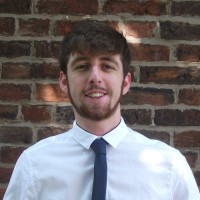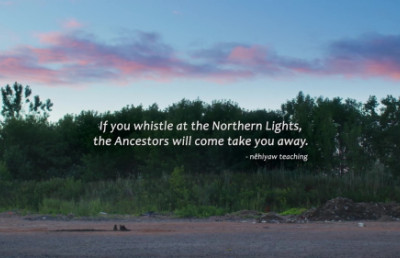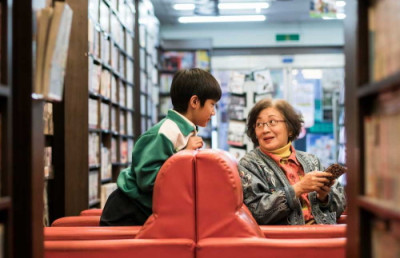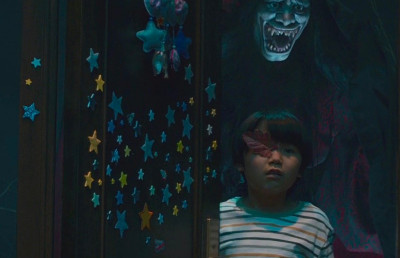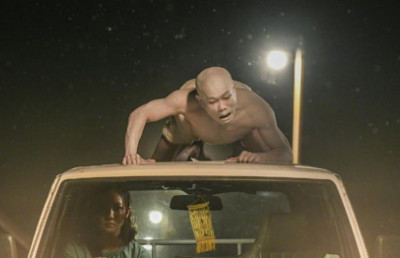Fighting for Freedom, at War with Democracy
Ukraine's Recent Struggles with Russia
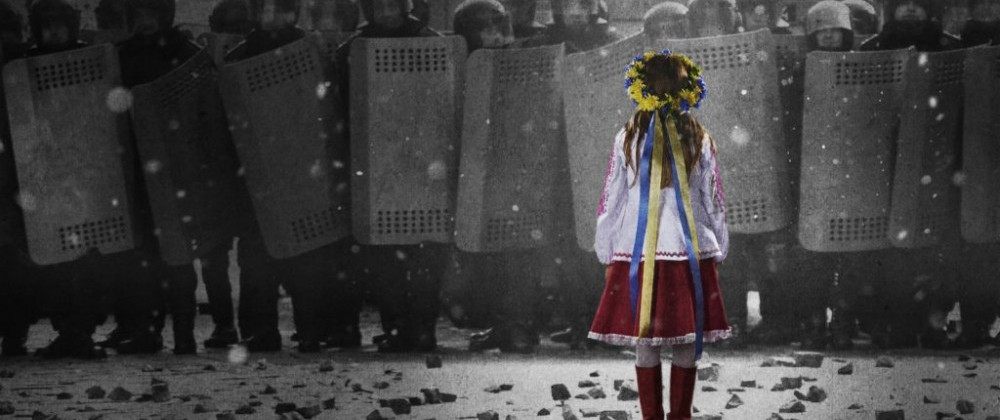
In times of crisis, we often turn to cinema. The power of film in these instances is twofold: we can transport to cinematic worlds in order to turn away from the crisis, to momentarily escape it; or we can remain turned to the crisis, watching films that directly address it and subsequently help us to be more informed, help us to better understand it. In 2022, we may wish to use cinema in the second of these ways as we collectively respond to Russia’s invasion of Ukraine. Winter on Fire: Ukraine’s Fight for Freedom (2015) and Breaking Point: The War for Democracy in Ukraine (2017) offer a platform for precisely this, allowing us to learn, think, and feel more about the consequences of Russia’s unlawful, inexcusable war on the people of Ukraine.
These two documentaries anticipate the current humanitarian crisis in Ukraine through their shared focus on the 2013-2014 Maidan Uprising, which saw Ukraine’s struggle for sovereignty be violently suppressed by authorities operating under President Viktor Yanukovych. Yanukovych and his Azarov government’s ties to Russia and his government’s U-turn decision not to sign the European Union-Ukraine Association Agreement brought mass protests in the name of freedom, in defence of democracy, with the desperate intention of preserving human rights in Ukraine. As such, Evgyeny Afineevsky’s Winter on Fire and Mark Jonathan Harris and Oles Sanin’s Breaking Point are testaments to how documentary cinema can be such an essential art form – both for its access and its authenticity, because it can both memorialise past conflicts and assist in our consideration of future crises. Winter on Fire is entirely focused on the period of the Maidan Uprising – from the 21st of November 2013 to the 23rd of February 2014 – and begins with a prologue on day 92, before going back to day one, passing through the next ninety-one days of civil unrest, then depicting the final three days of the uprising. Breaking Point, meanwhile, looks at and then continues after the ninety-five days at Maidan Nezalezhnosti in Kyiv, ending at 2015’s Russia-Ukraine ceasefire agreement. Despite their pronounced and different endpoints, both films accentuate how the struggle is far from over by the time the cameras have stopped rolling, which has particular resonance when these films are viewed in 2022 – and when, as I write this, it has been over two months since Vladimir Putin announced a “special military operation” to “demilitarise and denazify” Ukraine and ordered Russia to invade its neighbours. I write this while there is no clear end in sight for the invasion that begun on the morning of the 24th of February.
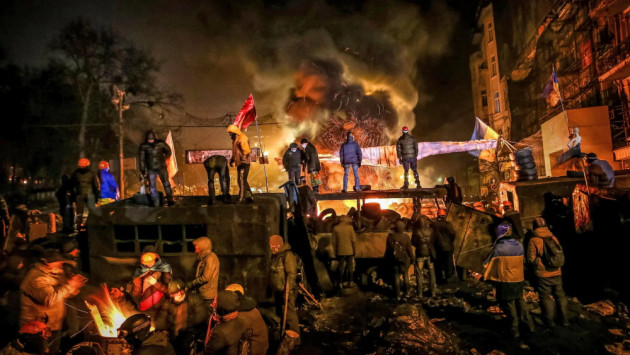
Winter on Fire
Within its temporal scope, Winter on Fire prioritises the students at the heart of the initial, peaceful Maidan protests, the government’s response to which led to three months of unrest. Breaking Point centralises the civilians-turned-soldiers that had to repel Berkut (special riot police) forces under the command of Yanukovych’s pro-Russia government. These different roles symbolise the range of ordinary people that have been most affected by this conflict, from the generation of thinkers and activists that will one day be in charge of running countries, to those that must forget about their day jobs and take up arms to defend their homes and their families when both come under unprovoked attack. Despite the different positions of students and soldiers within the Maidan struggle, the stage for the conflict was the same and collapsed distinctions between young and old, between those wishing to resolve the conflict with their words and those needing to do so by using their hands. This collapse was a necessity in order to survive the three months at the Maidan and elsewhere in Kyiv, but is also a necessity today, with women, men, adults, children, and every other identity category that makes up Ukraine’s population joining in their opposition of Russian attempts to take away their sovereignty. Both Winter on Fire and Breaking Point use their cinematic form to highlight this communality and collectivism, applying the democratic stylistic licenses of the documentary to the preservation and restoration of democracy itself. The form historically brings together many voices, accumulating multifaceted conversations with the help of talking head interviews, disembodied voiceover, real-life footage, and other strategies of telling urgent, authentic stories. These two films are no different, applying aesthetics to agenda and joining stylistic execution with the bottom-line social conscience that the form is so often selflessly (and importantly) in the service of.
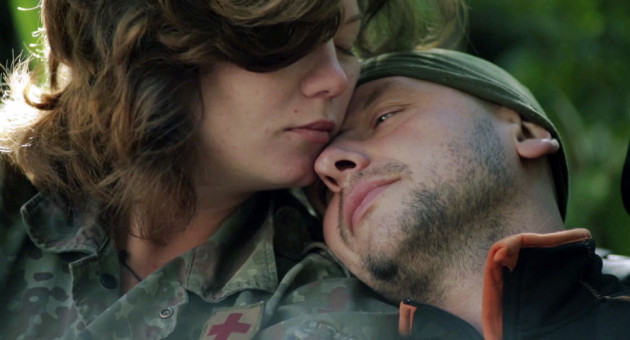
Breaking Point
Winter on Fire introduces this sense of duty in its opening scene: we meet a sixteen-year-old Ukrainian during day 92 of the uprising, who looks into the camera being held by a friend and says how “I always wanted to be on the front lines”, how “this is the Ukrainian revolution.” A fellow self-trained young soldier tells someone else out of frame: “Don’t go there. They’re shooting over there.” This depiction of childish innocence dressed up in a bulletproof vest is intensified when, as the film catches up with day 92 chronologically (in its final half hour), we see the rest of this scene. Now named, sixteen-year-old Dmytro Holubnychyy is told by the soldier filming to get his phone out and speak to his mother while the camera is rolling, which Dmytro does not really understand the significance of, seemingly unaware of the sheer stakes of what he is doing. The decision to divide this scene in two offers the space for the film to cover the escalation of events at the Maidan that led to this point, but also stresses how, despite this escalation, fundamentally not much has changed when the conflict is as its peak. The threat to Ukraine’s independence was there before the designation of a “day one” and remains, only that independence now has even less jurisdiction. Families are still being broken apart and children are still being forcibly transformed into adults placed in danger, only the goalposts have been moved and children (particularly students) are now at the absolute centre of the danger, and more and more of them are having their futures stolen. Structurally, Winter on Fire’s intentional, chronological false start demonstrates how Ukraine is wrongfully familiar with the cycle of mistreatment. As a country, it has perpetually seen beginnings to, violent escalations of, and deceptive endings to its mistreatment – as has been the case since the dissolution of the Soviet Union in 1991. Winter on Fire’s very particular structural decision transcends stylistic effect or artistic stunt then, pointing to the very real components of pattern and repetition that are part of Russia’s longstanding persecution of Ukraine.
Breaking Point contains a similar false start, beginning in “Fall 2015, Eastern Ukraine” before jumping back to a year earlier, as signposted by a title card. This film begins with a narratorial voiceover – by who we later learn is a children’s theatre director named Andriy “Bohema” Sharaskin – explaining that “I’m the kind of person who thinks that beauty, art, love will save the world.” We cut to Andriy’s face in a car rear-view mirror, a car he drives to a site of ruins. At the ruins, Andriy gets out of the car and puts on a bulletproof vest taken from his boot [trunk]. Throughout its runtime, Breaking Point captures this sense of being numb to violence, of being desensitised to the routine of defending your country. At one point, soldiers talk about how they make coffee and sit around bored during the shelling, because they know that when the shelling stops, the ground troops will be deployed, which is when they are needed. This discussion of coffeemaking spotlights how mundanity is played as horror in Breaking Point. The horror is antithetical to the humour that something as innocuous as coffeemaking might otherwise be mined for, were it not for the vitally firm tone of this film. Ukraine is firmly united in this struggle; collectively, its people are drained and depleted but will continue to resist, from Andriy the soldier by proxy to Winter on Fire’s young, confused Dmytro. This dichotomy of fatigue and reserved strength is channelled in the two films, which underline the urgency of Ukraine’s situation but package and present this situation frankly, leading to a forthright, matter-of-fact documentarian delivery. The films are both products of Ukraine’s national exhaustion and are driven by the three directors’ shared intention of presenting indisputable facts and unquestionable visual evidence of Russia’s wrongdoings. After all, Russia is a country built on deception, manipulation, misinformation, and lies; it is inevitable that any contention with this must be motivated by truth and sincerity.
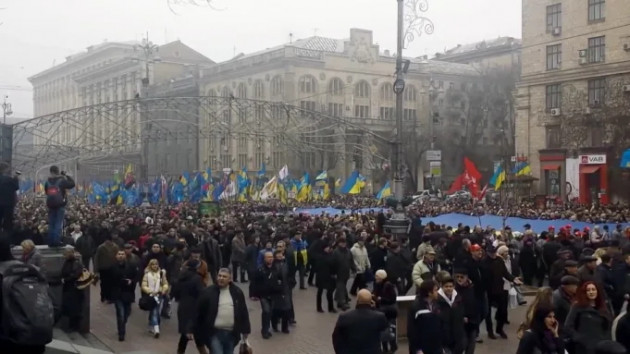
Breaking Point
The structures and atmospheres of these two films are important, but voice and language are equally powerful cinematic tools. In Winter on Fire, voice is heterogenous and conversation is inclusive and comprehensive. Afineevsky interviews all kinds of Ukrainian people, from national celebrities to foreign journalists, from shy teenage girls on their way to the first peaceful protests at the Maidan (who talk of “dream[ing] of a better future”) to adult realists, such as one who laments the fact that “you can’t do anything to stop this mass destruction machine.” Words have a distinct power in Winter on Fire, which is a persistent motivation even as the conflict turns increasingly physical and violent due to the Berkut’s use of excessive, unnecessary force. Often these words contribute to a conversation with the camera – and by extension with us, the audience – and range from confirmatory (“kids were there”) to informative (“It’s not even about European integration anymore. People just want to live in freedom”) to inflammatory (“there are such bastards in the police”, which come from a man being bandaged up in the back of an ambulance early on in the film). At other stages, words are exchanged by different parties and the camera/spectator is a silent witness, such as when a middle-aged man confronts officers and demands to know “What the hell are you doing – why?” There are other examples of words framed as a question, such as when someone with blood pouring from their head is helped to their feet by a Berkut officer and calmly, rationally (strategies not so familiar to the Berkut) tells that officer that “I have only one question: why? Aren’t you Ukrainian too?” Elsewhere, words decorate signs and pickets, such as the “we are against the police state” message being broadcast from the side of a bridge. Words also form chants, like the “Ukraine is part of Europe” refrain that reverberates around the Maidan on day one of the uprising.
Voice and language are insistently democratic, unapologetically diverse weapons in Breaking Point, too. Harris and Sanin interview historians who trace what is happening back to Stalin’s rule (and compare Putin to Stalin and Hitler), but the two directors also focus on individuals rooted in the present tense of the uprising, such as journalist Tetiana Chornovol, one of the leaders in the Maidan protest campaign who was severely beaten by Berkut officers after her car was rammed outside Kyiv on the 24th of December 2013. The film also devotes a substantial portion of its perspective to Andriy the theatre director, beyond its opening moments when he discusses how “the first time I got involved was when they beat up the children. The students.” But the potential for Andriy to emerge as a protagonist is placed in contradistinction to the film’s generous, inclusive, open invitation for anyone who walks past the camera to say something, to be heard. Unlike Winter on Fire, Breaking Point takes those that want to speak to one side and does not often interview them on the move. Perhaps due to its more versatile approach to space and its stronger emphasis on retrospection – compared to Winter on Fire’s immediacy and attention to the specific scene of the Russia and Ukrainian governments’ crimes – Breaking Point usually interviews statically. It roots its speakers to the ground and hears them out in full, but it is designed to be able to do this, so resonates differently to Winter on Fire. Language in Breaking Point is therefore more direct and to the point, particularly during what one interview subject calls Yanukovych’s “de-facto invasion”, which necessitates an effort to counter his government’s weaponisation of fake movements and slogans. This notion of linguistic concision and accuracy is also important later on, when Russia deploys its “little green men” after Yanukovych has fled to Russia (where he still lives in exile today), who are masked and in unmarked green uniforms but at one point confirm their Russian nationality and allegiance to the camera.
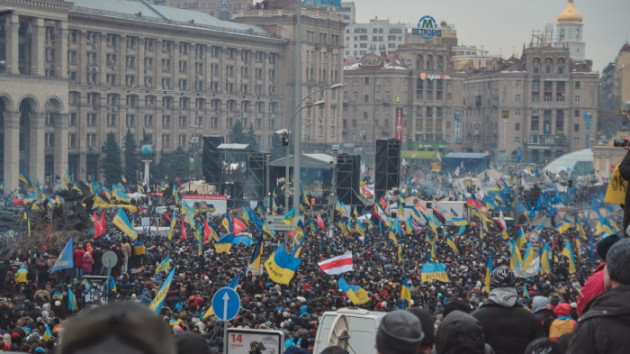
Winter on Fire
This directness manifests in lines such as “Everyone knows he’s not the president”, “the government would deliver Ukraine to Putin”, and “there was nothing quite like the Maidan.” Again, hitting different to the equally important words in Winter on Fire, Breaking Point uses the present tense as a linguistic pivot but grants access to the past and even the conditional tenses. Harris and Sanin’s film is able to be speculative because its action carries on after Yanukovych signs the agreement for an interim unity government and flees the country thirty-seven minutes into its runtime, establishing an afterlife to the uprising, showing how the country picked up its pieces and distinguishing the film from the narrower but no less effective focus of Winter on Fire. With speculation comes hope, which in Breaking Point takes the form of legislative action: the interim Yatsenuk government (with Oleksandr Turchynov at its helm) mobilises 16,000 legitimate police officers to restore order after the crimes of the Berkut and Putin’s little green men. Harris and Sanin’s film also gives hope ideological levity, which is demonstrated by something that Turchynov himself says in one of his many interview fragments during Breaking Point: “revolution must give way to evolution.” It is also captured in a line by Chrystia Freeland, then international trade minister and today deputy prime minister of Canada: “I am convinced that the path to democracy in Russia goes through Ukraine.”
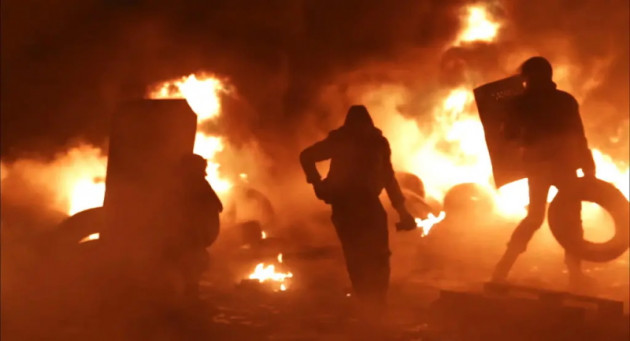
Breaking Point
Winter on Fire contains hope even if its interest in not straying far beyond the events at the Maidan means that this hope is not given a temporal framework. During the uprising, Ukrainian civilians retain their sense of humour in a bid to prevent Russia and Yanukovych’s government from taking away their humanity. As restrictions to their right to protest are written into law by meetings between groups of people becoming illegal and formal protective gear and helmets getting banned, the Ukrainian people respond by returning to the Maidan the following morning wearing pots and pans on their heads instead. Their sense of humour is matched by their resilience, matched by their collective and constant self-reminder that “No-one can make a free person kneel”, as one interview subject puts it. But the upsetting facts of the matter remain, and the statistics supplied at the ends of both films speak for themselves: 93 days, 123 dead, 1890 injured in Winter on Fire’s case; for Breaking Point, which depicts an additional year or so after the official ending to the Maidan Uprising, 10,012 killed in the Russo-Ukrainian war. Carrying on seven years after both sets of cameras were turned off, bringing things up to date as I write this, the death toll is significantly, terrifyingly higher. After all, documentary filmmaking can only do so much in the face of crisis. As ordinary human beings – not necessarily students, soldiers, or filmmakers – it is our responsibility to actively reach for the baton when it is passed on to us. Whether directly or indirectly impacted, whether in the country involved or on the other side of the world, it is our duty to carry on the conversation about a crisis when we are aware that injustice is happening. It is our duty to not turn a blind eye, but to help in whichever ways we can. The fundamental building blocks of filmmaking do not need to be exclusive to an artistic context; our images and our words are ultimately all that is needed to instigate real change.

